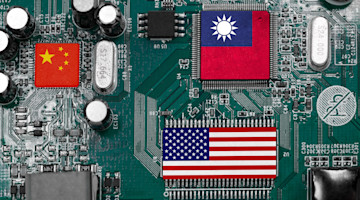Variability in part quality continues to be a challenge in production additive manufacturing (AM) and has continued to play a significant role in limiting its adoption for volume production. To date, the problem has been quantified, but not remedied, by a number of different approaches across inspection and non-destructive and destructive testing, yet these methods are cost prohibitive and impractical for production parts.
As an incredibly data-rich process, AM lends itself to increasing levels of data collection, processing, and analysis to optimize part designs for performance requirements and addressing print quality and repeatability.
New data-driven approaches involving computer vision or machine learning (ML) are emerging to address these challenges at different points in the AM workflow. We’ll take a look at two notable cases and how they are beginning to improve AM processes.
Computer vision improving AM processes
Inkbit, a venture-backed startup with ties to the Computer Science and Artificial Intelligence Laboratory (CSAIL) at MIT, has developed the first AM printer that uses computer vision and real-time closed-loop feedback control to detect process variation and dynamically compensate for it to improve printing performance, accuracy, and repeatability. The company’s 3D printer platform, Inkbit Vista, uses a material jetting-based process the company terms “vision-controlled jetting” (VCJ) that is capable of printing multi-material parts with varying mechanical properties. The VCJ process combines material jetting, which is a layer-by-layer 3D inkjet-based process not dissimilar to commercial 2D inkjet plotters, with high-resolution 3D scanning hardware and software.
“Our computer vision and scanning approach monitors the printing process in real time, and as we detect process variation – for example, an inkjet nozzle becomes clogged – we can react in real time and compensate by jetting additional material on the next layer of printing,” said Davide Marini, co-founder and CEO, Inkbit.
Inkbit Vista’s internal 3D scanning system captures voxel-by-voxel 3D scan data of each printed layer at high speed to generate a topographical map. From this data-rich map, Inkbit’s software algorithms analyze the map and compare it to the part’s design file in order to adjust any parameters for the subsequent layer. This closed-loop feedback control using computer vision enables highly Continued from the cover...
accurate and repeatable parts to be produced without extending print times, while dramatically improving the process for production use cases in addition to prototyping.
Capturing and processing this data creates opportunities with certain users. Marini noted that “the [software] application is completely transparent to the user and can provide access to as much or as little data as the user wants, up to a complete digital record of the entire printing process for every print. We understand that some customers will require all of this data for regulatory and compliance purposes, such as for medical applications, where traceability and quality control data is mandated, while others may not need all the data.”
Although there are a handful of companies implementing computer vision for AM process monitoring and control, real-time dynamic layer compensation is a notable advancement and differentiates monitoring from process control and improvement. With its own photopolymer materials development in house, Inkbit expects to deliver the Vista 3D printer and select materials to beta customers in early 2022.
ML prepares AM part designs for manufacturability
ParaMatters has developed CogniCAD 5.0, a generative design and advanced manufacturing platform that helps design topology-optimized, manufacturing-ready parts for AM, CNC machining, casting, and molding, as well as preparing those designs for additive manufacturing. The software offers simulation-based approaches to designing for mechanical, thermal, and safety requirements as well as a machine learning-based support structure generation feature for AM processes. The software features what the company calls one-click computer-generated design – a function that lets the user ask the platform to determine the optimal (i.e., algorithmically optimized) print orientation and support structures for their part design.
“If there is a simulation approach that works for a company’s AM part design, it is not necessary to bring in machine learning as a tool,” said Michael Bogomolny, co-founder and CTO, ParaMatters. “However, in cases where you don’t have an adequate analytical solution – e.g., finite element analysis for topology optimization or distortion simulation – then you can benefit from a data-based approach that uses machine learning.”
Paramatters recognized the need for a better and automated support structure creation feature in AM, and to do this, the user “should make sure that the AM support structure success rate is higher by addressing the most support points on the part. This optimization needs very smart algorithms to do the job in the correct way, and unsupervised machine learning does this very well.” Bogomolny went on to comment generally that in AM, “application engineers need to change parameters such as layer thickness, build chamber temperature, or use a different powder batch, and these are all areas where an analytical model cannot predict the impact of these changes on material properties. We believe a hybrid approach that combines analytical methods and ML will be increasingly used as AM production continues to evolve for mission-critical applications.”
ParaMatters is currently in the process of expanding its generative design platform into a full AM workflow solution, including post-manufacturing inspection as a part of a digital factory vision. Vat photopolymerization, laser powder bed fusion, and polymer extrusion functionality are already being used by customers – including a recently announced collaboration with Airbus and Covestro.
Addressing challenges with new developments
Inkbit and Paramatters represent two exciting examples from different parts of the AM workflow that use non-traditional approaches to provide capabilities and value to end users. As the AM industry continues to strive to meet part accuracy, repeatability, and increasingly complex design requirements, we should expect to see more companies looking to develop and apply advanced tools such as computer vision and ML in pursuit of manufacturing excellence.
Dayton Horvath joins AMT
Dayton Horvath joined AMT as the director of emerging technology in September 2021 to lead market research, product development, and consulting services in emerging technology. With an initial focus on additive manufacturing (AM), Dayton will expand AMT’s membership, thought leadership, and service offerings before expanding to other emerging manufacturing technologies. Dayton will continue to speak regularly at international conferences and contribute to industry publications. His subject matter expertise extends to strategic investments and mergers and acquisitions (M&A) in advanced manufacturing industries.
“We are very pleased to welcome Dayton to the AMT team,” said Travis Egan, vice president of business development, AMT. “He brings a wealth of business and technology experience to advance AMT’s product development, subject matter expertise, and strategic membership development. Dayton has deep knowledge and a robust network in the field of AM and brings several digital research/content product platforms in AM to AMT.”
Before joining AMT, Dayton served as a principal at NewCap Partners, where he provided sell-side M&A, equity financing, and buy-side financial advisory and transaction-related services for advanced manufacturing, software, and materials companies with a strong focus on the AM industry.
Prior to NewCap Partners, Dayton founded an independent consultancy, The Additive Executive, which provided strategic advice, market analysis, and technology scouting services to venture-backed startups and Fortune 500 companies alike. Previously, he led the Materials Design and Manufacturing coverage area at Lux Research and started his career at Citrine Informatics.
Dayton graduated with his M.S. in chemistry from the University of California, Santa Barbara. He has a B.S. in chemistry from the University of Connecticut, where he graduated as a University Scholar and Honors Scholar.









